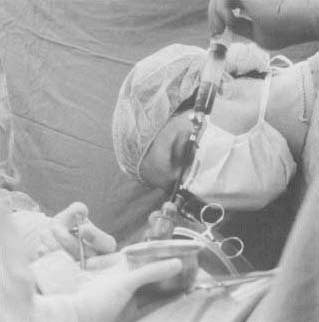In vitro fertilization
In vitro fertilization (IVF) is the term used to describe the combination of egg cells and sperm in a glass petri dish in order to fertilize the eggs. "In vitro" comes from the Latin word meaning "in glass." The procedure is used to treat infertility, a condition in which, for various reasons, a woman cannot become pregnant.
In the procedure, eggs are removed from the woman's uterus, fertilized with sperm, and then returned to the uterus to produce a pregnancy. The first baby conceived by in vitro fertilization, Louise Brown, was born in England in 1978. Since then, more than 3,000 babies conceived in this way have been born.
Early Attempts
Early attempts at IVF were made over a century ago, with a successful rabbit embryo transfer carried out by Walter Heape in England. Gregory Pincus (1903-1967) performed further IVF experiments in the 1930s. An editorial in the New England Journal of Medicine in 1937 suggested IVF as a treatment for infertility in women. Although human IVF experiments were carried out in the 1940s and 1950s by John Rock (1890-) and Landrum

It was eventually learned that, after ejaculation (the moment when semen is discharged from the body), sperm undergo changes in their plasma membrane (the thin skin covering every cell). The change that occurs in the sperm's plasma membrane is called capacitation, and it must take place in order to be capable of fertilizing the egg cell. The oocyte (egg) also is not ready for fertilization until just before ovulation occurs.
Armed with this knowledge, researchers successfully fertilized rabbit oocytes in vitro. Min-Chueh Chang (1908-) then went a step further and implanted the IVF-fertilized oocytes into female rabbits. IVF for many other species followed.
The final advance was made by British physicians Robert Edwards and Patrick Steptoe, who began collaborating in 1968. The two doctors developed a method of stimulating ovulation with hormone treatment, then retrieving the nearly mature ova (eggs) and culturing them for the several hours needed for full maturation. Meanwhile, a fresh specimen of male sperm was treated so it underwent capacitation, then it was added to the oocytes in the petri dish, where fertilization took place. The researchers waited until the egg divided into an eight-celled embryo, then transferred it into the woman's uterus where, in successful IVF procedures, it would implant.
Variations on IVF
Several variations on IVF are now practiced. One is called gamete intrafallopian transfer (GIFT), in which eggs and sperm are gathered and prepared just as in IVF. Then they are placed into the woman's fallopian tube for fertilzation to occur, rather than in a petri dish. Another method is called zygote intrafallopian transfer (ZIFT), in which one or more zygotes (fertilized eggs that have not yet started to divide) are transferred to the fallopian tubes.
Current Success
Although the success rate is considered modest—approximately 20 percent result in a full-term pregnancy—IVF is a widely used infertility treatment. Hundreds of medical centers around the world offer the procedure. Since the mid-1980s, cryopreservation (freezing) of eggs (or embryos) has become a common practice. This involves the preserving of additional fertilized eggs to be used later, in case the IVF treatment does not produce a pregnancy.
The resulting legal and moral questions of freezing human embryos was dramatized in a 1984 plane crash. A husband and wife who died in the crash left behind cryopreserved embryos in Australia. The sudden deaths raised many questions. What should be done with cyropreserved embryos? Does anyone have the right to dispose of them? How long can they be stored? Who owns them?
Comment about this article, ask questions, or add new information about this topic: